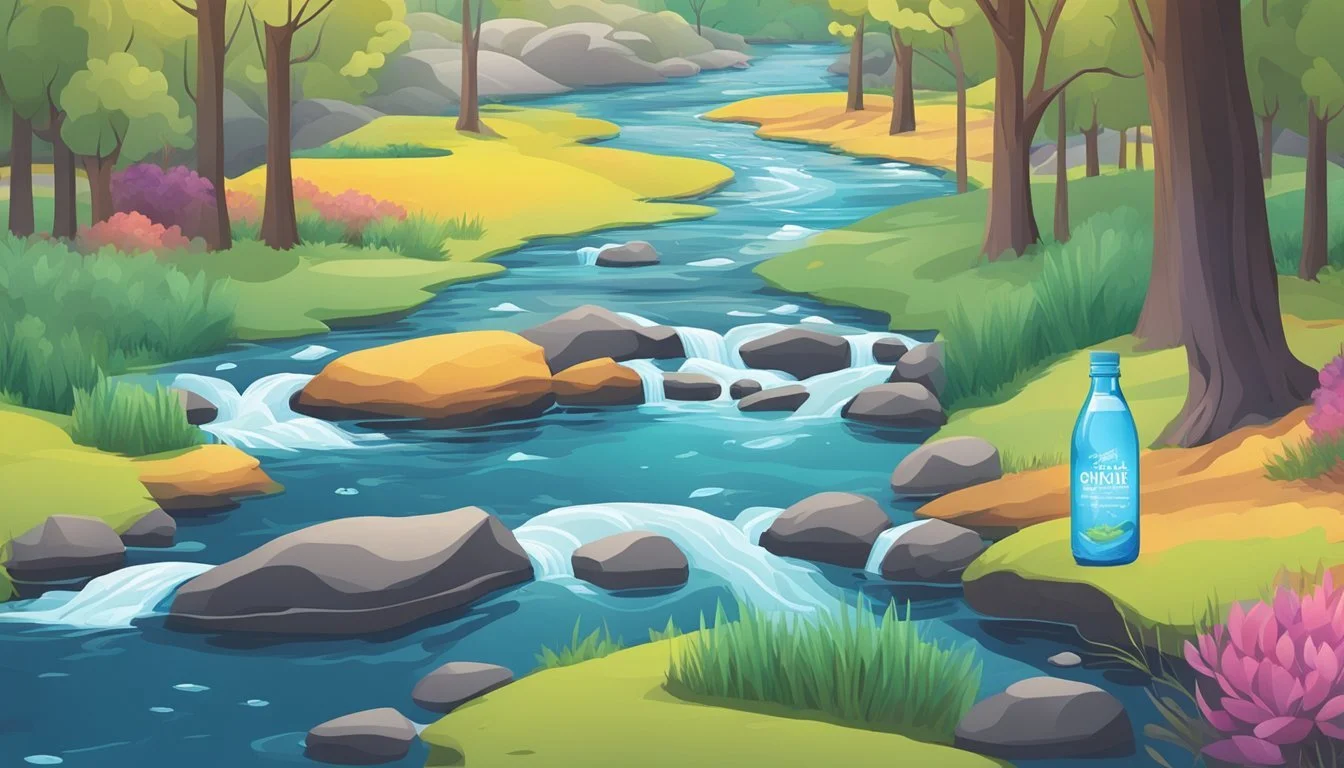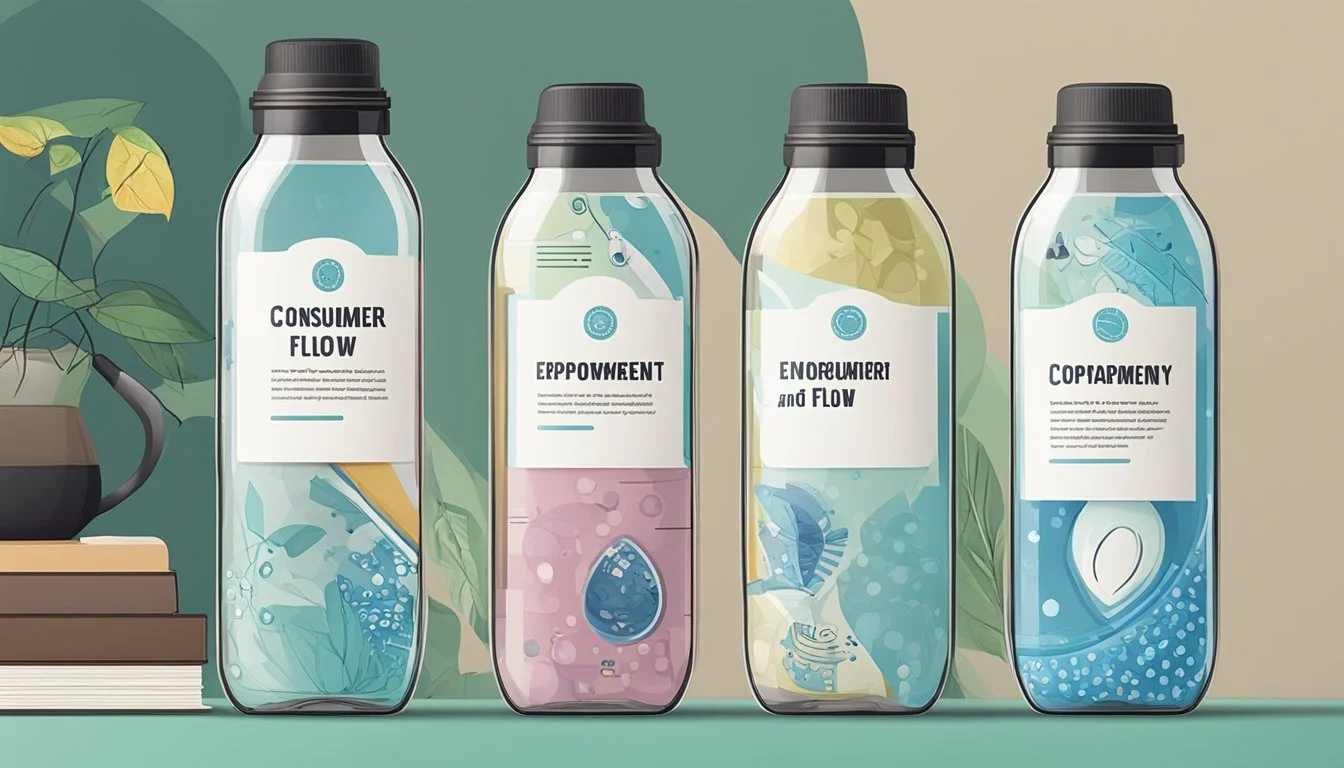Flow vs. Weird Water
A Comparative Analysis of Bottled Waters
Choosing the right bottled water can be more nuanced than it seems. For those seeking a comparison between Flow and Weird Water, it’s essential to consider factors like taste, bottle material, and brand values. Flow offers naturally alkaline spring water, packaged in eco-friendly cartons, while Weird Water stands out with its unique mineral profile that promises a distinctive taste experience.
Flow emphasizes sustainability with its packaging choices and commitment to providing pure, naturally alkaline water. Its taste is often described as clean and refreshing, catering to consumers who prioritize both health and environmental impact.
Weird Water, on the other hand, draws attention with its unconventional approach to mineral content, offering a flavor that some find unique and memorable. This brand targets those who are looking for something different in the crowded bottled water market. Ultimately, the better choice depends on your personal priorities—whether it's eco-friendliness with Flow or a unique taste experience with Weird Water.
Understanding Bottled Water
Bottled water has become a common and often preferred choice due to its convenience and perceived purity. This section explores the historical context, terminology, water sources, and processing methods.
Historical Perspective and Modern Evolution
The practice of bottling water dates back to ancient times, with the first commercial bottled water sold in the early 17th century. Early European spa towns bottled and sold water, believed to have medicinal properties.
In the 20th century, technological advances, including ozone disinfection and membrane filtration, further improved water quality. Today, bottled water is available in various forms, including mineral, spring, and purified water. The industry's growth has been driven by demand for convenient, safe drinking water and effective marketing strategies.
Terminology and Types
Bottled water comes in several types, each differing in source and processing:
Mineral Water: Contains minerals and trace elements naturally.
Spring Water: Sourced from underground formations where water flows naturally to the surface.
Purified Water: Undergoes treatments such as reverse osmosis or distillation.
Sparkling Water: Carbonated, either naturally or artificially.
Artesian Well Water: Drawn from a well tapping a confined aquifer.
Each type meets specific regulations, ensuring safety and quality.
Water Sources and Processing
Bottled water sources include natural springs, artesian wells, and groundwater.
Natural Spring Water: Comes from pockets in the earth where water flows to the surface.
Groundwater and Well Water: Extracted via wells, requiring stringent testing and purification.
Processing methods range from chlorination and ozonation to use of advanced technologies like reverse osmosis and ultraviolet light. These processes eliminate contaminants and pathogens, ensuring safe and clean drinking water. The choice of processing depends on the water source and desired purity level.
Bottled water's journey from natural sources to retail shelves involves meticulous testing and processing, guaranteeing quality and safety for consumers.
Health and Safety Regulations
Ensuring the safety and quality of drinking water involves strict regulations and monitoring. This section will explore standards and quality control measures, as well as compare bottled and tap water.
Standards and Quality Control
Regulatory Bodies:
The Environmental Protection Agency (EPA) sets standards for tap water.
The Food and Drug Administration (FDA) oversees bottled water.
Water Quality: The EPA monitors tap water for contaminants such as heavy metals and other impurities. Tap water undergoes regular testing for compliance with the Safe Drinking Water Act.
The FDA regulates bottled water similarly but has less stringent requirements. Bottled water must meet specific standards for contaminants, though some argue these are not as rigorous as the EPA's standards for tap water.
Quality Controls: Both tap and bottled water are monitored for *toxins, bacterial contamination, and chemical pollutants. However, the varying regulations mean differences in oversight and enforcement. This can lead to occasional issues in both water sources, although both are generally considered safe for consumption.
Bottled vs Tap Water
Bottled Water:
Bottled water often comes from source water (e.g., springs, groundwater).
Costs: Bottled water can cost more than $1 per 20 ounces.
Regulation: FDA oversees it but sometimes with less stringent requirements than tap water.
Tap Water:
Tap water is usually sourced from surface water.
Costs: Tap water is very cost-effective, about $0.02 per gallon.
Regulation: Governed by the EPA, which has strict standards.
Tap water can also be distributed through municipal systems ensuring regulations are followed closely.
Both tap water and bottled water have their advantages and drawbacks, but both are subject to regulatory frameworks aimed at protecting public health.
Comparing Brands and Varieties
When comparing Flow and Weird Water, it's important to look at how they stack up against other well-known brands in the market. Considerations include mainstream and niche offerings, taste profiles, and rankings.
Mainstream and Niche Brands Overview
Aquafina and Dasani are among the mainstream brands commonly found in stores everywhere. They provide a reliable and widely accepted option. Other mainstream brands like Nestle Pure Life and Poland Spring also dominate the shelves.
On the niche side, brands like Voss, Icelandic Glacial, and Acqua Panna offer unique selling points, such as specific mineral compositions or exclusive sources. These often come at a higher price but are preferred by water enthusiasts for their distinct profiles.
Taste Profiles and Water Sommelier Insights
The taste of water varies based on mineral content and natural sources. Fiji Water, known for its silica content, delivers a smooth mouthfeel. Evian has a naturally balanced taste due to its mineral richness.
According to water sommeliers, brands like Mountain Valley and Voss score high due to their crisp and clean flavors. Dasani and Aquafina often rank lower among experts for taste due to their processed origins.
A water sommelier might highlight the velvety texture of Mountain Valley or the slight sweetness of Icelandic Glacial as distinguishing features.
Ranking From Worst to Best
Rankings often place waters based on taste, source, and mineral content. Worst:
Pure Life – Lacks distinct flavor, processed.
Aquafina – Low pH, processed origin.
Best:
Mountain Valley – High in taste and texture.
Fiji Water – Smooth due to silica.
Other notable mentions include SmartWater for its vapor distillation process and Evian for its balanced mineral content. Rankings can be subjective, influenced by personal taste and specific criteria set by individual reviewers.
Economic and Convenience Factors
When considering the economic and convenience aspects of bottled water, key elements include production costs, retail pricing, and the availability of various brands. The impact of these factors on consumer choice and accessibility is significant.
Cost of Production and Retail Pricing
The cost of bottled water encompasses production expenses, packaging, and transportation. Flow and Weird Water, like other brands, invest in filtration and bottling technologies. The materials used for bottles, be it plastic or glass, also influence the overall cost.
Retail pricing reflects these production costs. Bottled water generally ranges in price based on quality, source, and packaging. Flow might be positioned as a premium brand, possibly using eco-friendly packaging, which can drive up its price.
On the other hand, Weird Water could be priced competitively to appeal to a broader market. Consumers often weigh these prices against perceived value and benefits. For instance, they might choose a higher-priced option if they believe it offers better purity or taste.
Availability and Consumer Choice
Convenience plays a crucial role in bottled water selection. Grocery stores and vending machines typically stock a variety of brands, including Flow and Weird Water. The widespread availability of these brands can significantly influence consumer decisions.
Flow may be marketed in health food stores and upscale supermarkets, while Weird Water might be more commonly found in local grocery stores and general retail outlets. This positions Weird Water as a go-to for everyday convenience, possibly increasing its market share.
Consumer choice is often guided by the accessibility and visibility of the brand. Easy access to both Flow and Weird Water in various retail settings highlights the importance of supply chain efficiency and market penetration in determining consumer preferences.
Environmental Considerations
When evaluating Flow and Weird Water bottled water brands, it is crucial to consider environmental impacts. Factors like packaging and sustainability play a significant role in determining which brand stands out in reducing harm to our planet.
Packaging and the Problem with Plastics
Plastic water bottles are a major environmental concern. They contribute significantly to global plastic waste, with a large portion ending up in landfills or oceans. Microplastics, tiny plastic particles that result from the degradation of these bottles, pose environmental and health risks.
Packaging is a pivotal element here. Flow uses boxed water packaging, which is more environmentally friendly compared to conventional plastic bottles. Conversely, Weird Water employs typical plastic bottles, which are not biodegradable and contribute to long-term waste. Choosing products with sustainable packaging reduces plastic waste and minimizes microplastic pollution.
Sustainability and Alternatives
Sustainability is a key factor in assessing bottled water brands. Producing plastic bottles requires substantial energy and water. Flow's boxed water offers a reusable solution that reduces reliance on single-use plastics.
Weird Water, using traditional plastic bottles, has a heavier environmental footprint. Alternatives like reusable bottles or other sustainable options should be considered to lessen environmental impact. Flow's commitment to sustainability through eco-friendly packaging provides a viable alternative to conventional bottled water, aligning more closely with environmentally conscious practices.
Environmental considerations, therefore, highlight the importance of packaging choices and sustainable practices in determining the better bottled water option.
Consumer Education and Empowerment
Understanding the differences between bottled water labels and the significance of hydration can empower consumers to make informed choices. Knowing what specific terms and claims mean helps in selecting bottled water that best fits one's needs.
Understanding Labels and Claims
Labels on bottled water can be confusing. Terms like "spring water," "purified water," and "artesian water" have specific meanings. Spring water must come from an underground formation and flow naturally to the surface. Purified water is treated through processes like distillation or reverse osmosis, removing most contaminants. Artesian water comes from a confined aquifer.
Claims about mineral content or health benefits might be regulated by the International Bottled Water Association (IBWA) but can vary. Consumers need to be cautious of marketing claims and understand the actual purification process behind their water.
The Significance of Hydration
Hydration is vital for health, affecting everything from physical performance to cognitive function. Bottled water offers a convenient way to maintain necessary hydration levels. Frequent hydration helps transport nutrients, regulate body temperature, and maintain skin health.
Comparing bottled water with tap water shows differences in taste and purity perceptions. Bottled water often appeals due to its taste or the perceived safety from contaminants.
Making Informed Choices
Educated consumers should consider multiple factors when selecting bottled water. Advantages of bottled water include convenience and the availability of flavored or carbonated options. Filtered water options like water distillers, faucet filters, and pitcher filters offer alternatives, providing purified water at a minimal cost.
Being aware of the cost disparity—bottled water can be up to 2,000 times more expensive than tap water—is crucial. Considering environmental impacts and reviewing labels for certification by IBWA or other agencies can further guide choices.
More About Flow
Flow vs Whole Foods Italian Still Mineral water: Which Bottled Water is Better?
Mountain Valley Spring Water vs Flow: Which Bottled Water is Better?
More About Weird Water
Aqua Carpatica vs Weird Water: Which Bottled Water is Better?
Cascade Mountain vs Weird Water: Which Bottled Water is Better?
Core Hydration vs Weird Water: Which Bottled Water is Better?
Crystal Geyser vs Weird Water: Which Bottled Water is Better?
Hawaii Volcanic vs Weird Water: Which Bottled Water is Better?
Hawaiian Springs vs Weird Water: Which Bottled Water is Better?
Icelandic Glacial vs Weird Water: Which Bottled Water is Better?
Mountain Valley Spring Water vs Weird Water: Which Bottled Water is Better?
Nestle Pure Life vs Weird Water: Which Bottled Water is Better?
Poland Spring vs Weird Water: Which Bottled Water is Better?
Purely Sedona vs Weird Water: Which Bottled Water is Better?
Richard's Rainwater vs Weird Water: Which Bottled Water is Better?
San Pellegrino vs Weird Water: Which Bottled Water is Better?
Solan de Cabras vs Weird Water: Which Bottled Water is Better?
Talking Rain AQA vs Weird Water: Which Bottled Water is Better?
Weird Water vs Kirkland Signature: Which Bottled Water is Better?
Weird Water vs Whole Foods 365: Which Bottled Water is Better?
Whole Foods Italian Still Mineral water vs Weird Water: Which Bottled Water is Better?





